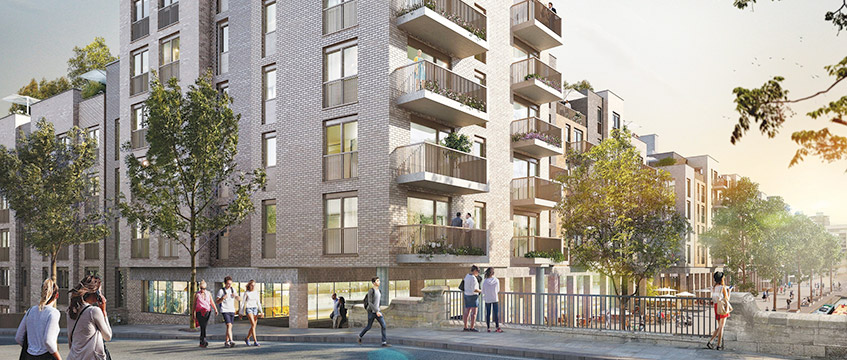There is a housing shortage in Scotland. Between 2013 and 2037 it’s projected that the number of households will increase by 16%. Between 2008 and 2014 there was an increase of just over 50% in the number of homes being rented. House prices have risen, mortgage checks are more rigorous and deposits are harder to put together – so it stands to reason that more people are renting.
Housebuilders are taking a cautious step back, making land available and more affordable for build-to-rent (BTR) developers.
Both the US and Europe have mature BTR sectors which continue to thrive – and in the UK, high-quality BTR schemes are attracting investment in London and Manchester.
How can it be, that – despite a housing shortage, a clear shift from home ownership to renting, and proven counter-cyclical returns to investors – the BTR sector in Scotland has not taken off?
Legislation
The past 10 years have seen a raft of positive measures introduced to regulate the private rented sector (PRS) and increase consumer confidence. More recently, the Private Housing (Tenancies) (Scotland) Act 2016, which is expected to come into force at the end of this year, poses some perceived challenges for investors:
- Fixed-term tenancies will be a thing of the past, with less certainty as to when a tenant can be required to leave. Such uncertainty can arguably work in an investor’s favour, and, in any event, there are 16 comprehensive, fixed grounds for recovering possession.
- Rent reviews will be restricted to once a year and, if disputed, tenants can ask a rent officer to set the rent subject to appeal – but so long as landlords review in line with the market there should be no scope for rent officers to disagree with their figure.
- Local authorities will have powers to designate all or part of an area as a rent control zone for up to five years, with rent increases subject to a collar of CPI+1% and a CPI-linked cap to be prescribed by the Scottish government. However, starting rents would continue to be market-led, and the Scottish government has given an assurance that these new powers will be used in a limited and exceptional way.
Planning and policy
Delivering more housing is a policy priority for both Westminster and the Scottish government, with each expressing support for the contribution BTR can make. While ongoing consultations on both sides of the border are looking at how the planning system can help encourage and deliver more BTR housing, Scotland is far behind, with only a high-level recognition and very little substance as to how planning and policy will support this.
It’s likely that Scottish planning practice will follow England, where we are seeing planning obligations to provide only rented accommodation for a minimum period and clawback payments to the local authority linked to the sale of individual units or investor profits – something investors may find hard to swallow. Consents for BTR schemes are also likely to require a percentage allocation of mid-market rental units (similar to affordable housing).
Planning authorities could assist by identifying suitable sites, by issuing detailed guidance to ensure a cohesive approach at a pace that will not be too slow for investors, and by relaxing planning contributions where a developer’s profit margins are narrow – providing certainty on costings for stakeholders.
On the flipside, there is a real opportunity now for would-be early entrants to BTR to seize the day and secure consents before Scottish planning policies become more developed.
Funding
Overseas investors are looking to take advantage of the weak pound. Both UK and overseas players are attracted by the proven steady returns of PRS.
However, the majority of institutional investment in the Scottish PRS is currently aimed at purpose-built student accommodation, a once-risky but now mature alternative asset class, and the challenge is to attract investment to the wider PRS.
One proposal to build investor confidence is a government-backed rental income guarantee scheme, the detail of which is subject to a 2016 market engagement document from the Scottish government and the industry-led PRS working group, highlighting strong Scottish government support in facilitating PRS.
Opportunity knocks
Although BTR is becoming more prevalent in England, there is a real risk that, if investors do not seize the opportunities in Scotland, it could be left behind.
It would be remiss to suggest that entering the BTR market in Scotland will be easy at this time – but there is clear demand, government support and evidence both in England and overseas that this is very much achievable.
The Scottish market has had a recent boost with several new schemes in the pipeline, but there is room for much more.
There are strong parallels between BTR and other forms of housing for rent, eg student accommodation, which continues to thrive on the back of secure long-term returns. The key message to investors is therefore to focus on the proven long-term benefits of PRS – and on being one of the early players to the market, paving the way for the future of BTR in Scotland.
Margaret McLean is a partner and Amy Campbell is an associate at CMS








